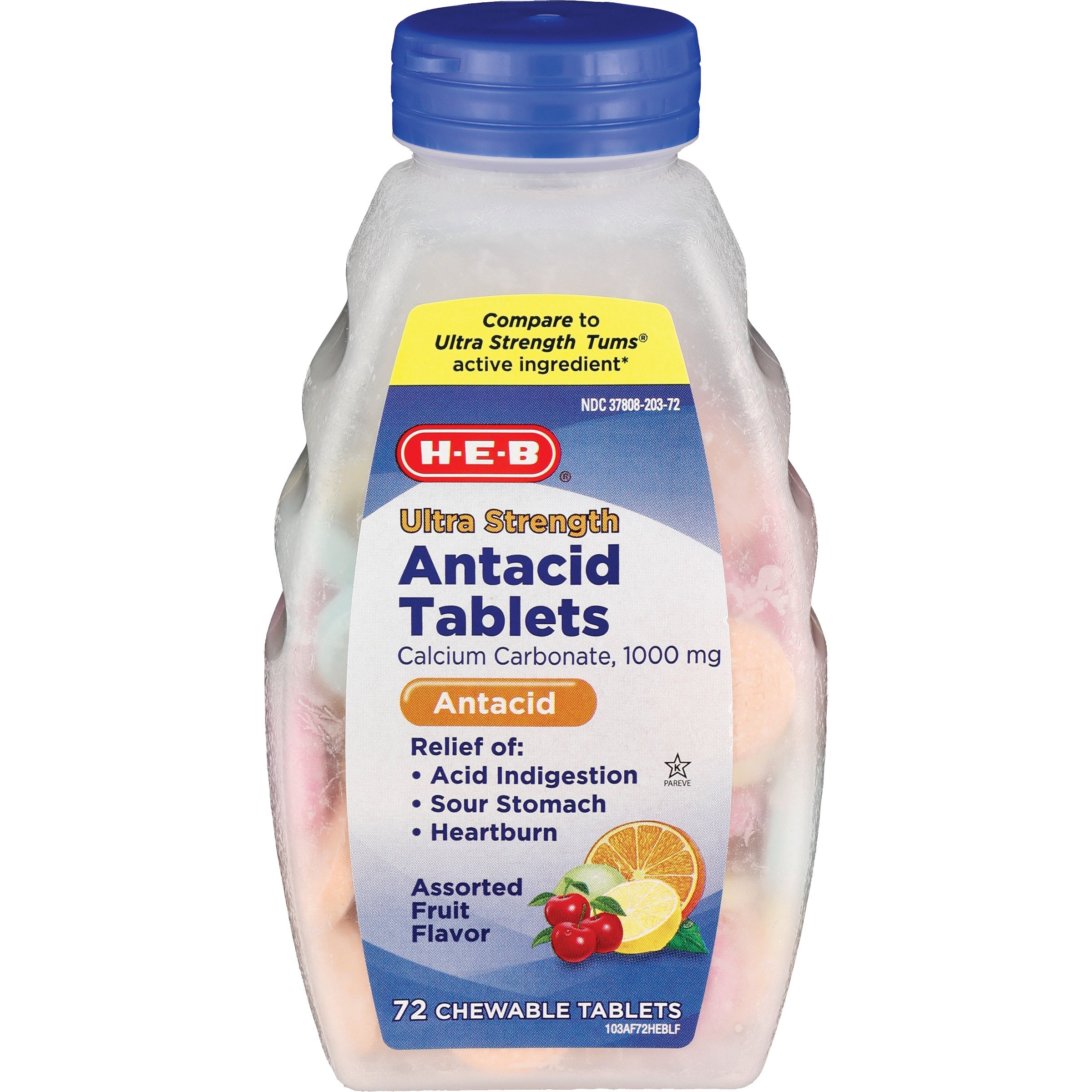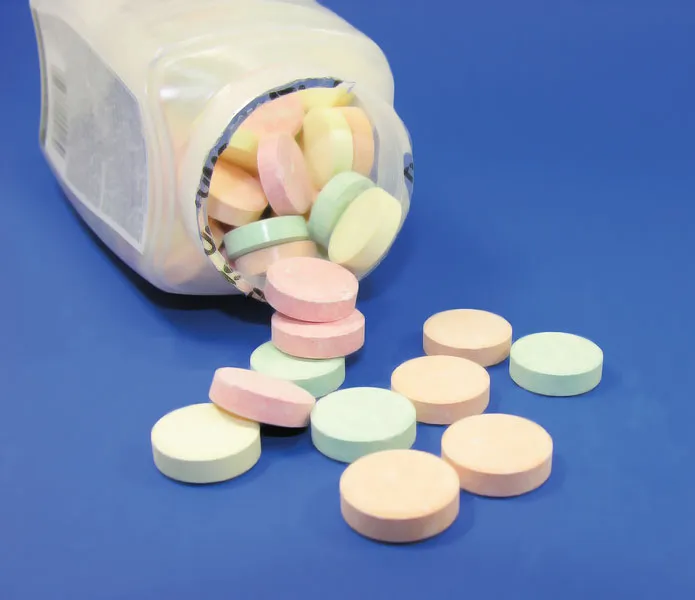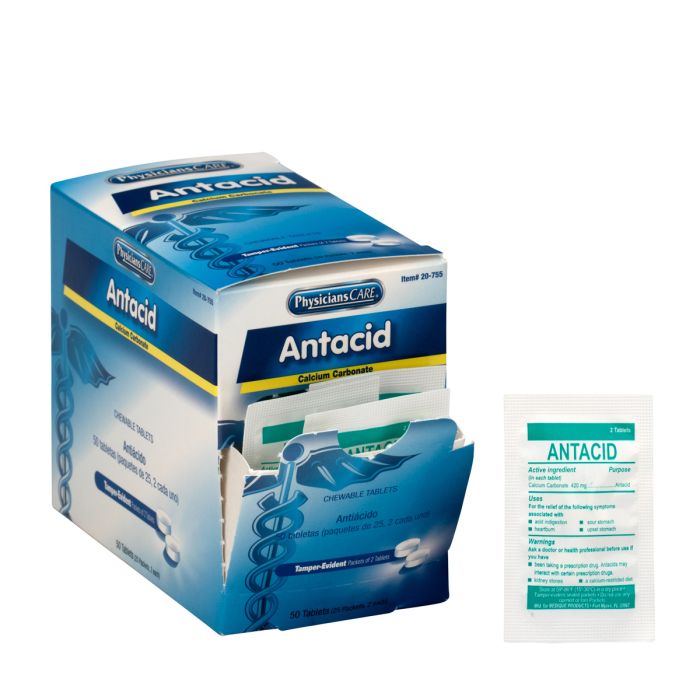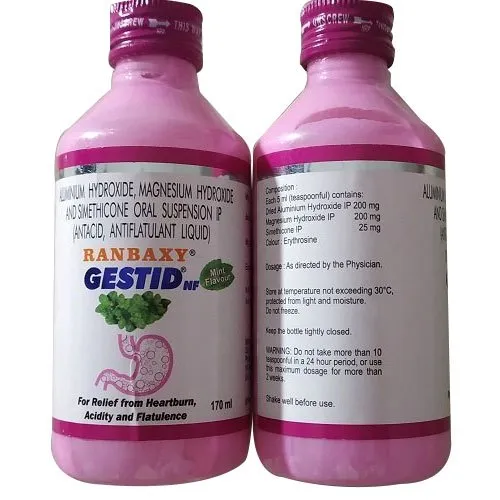Unveiling the Fast Relief of Antacids in Digestive Wellness
Discover the swift relief offered by antacids, the go-to solution for immediate relief from heartburn and indigestion. From their rapid mechanism of action to considerations and usage tips, this article unveils the efficacy of antacids in neutralizing stomach acid, ensuring comfort in the face of digestive discomfort.
The Fast-Acting Magic of Antacids in Soothing Digestive Discomfort

In the realm of digestive health, antacids play a crucial role in providing relief from the discomfort associated with excess stomach acidity. These over-the-counter medications are designed to neutralize gastric acid and alleviate symptoms such as heartburn and indigestion. Antacids are medications primarily used to neutralize excess stomach acid. They offer quick relief from symptoms like heartburn, acid indigestion, and sour stomach. Understanding their purpose involves recognizing the importance of maintaining a balanced pH level in the stomach for optimal digestive function. Antacids work by neutralizing stomach acid through a chemical reaction. Common ingredients such as aluminum hydroxide, magnesium hydroxide, and calcium carbonate react with gastric acid to form salts and water, reducing acidity. This neutralization process helps alleviate the burning sensation associated with acid reflux.
Types of Antacids
There are several types of antacids available over-the-counter, each containing different active ingredients. The main types of antacids include:
- Calcium Carbonate:
- Mechanism of Action: Calcium carbonate reacts with stomach acid to form calcium chloride, carbon dioxide, and water. It has a rapid onset of action and provides relatively long-lasting relief.
- Examples: Tums, Rolaids.
- Magnesium Hydroxide:
- Mechanism of Action: Magnesium hydroxide reacts with stomach acid to form magnesium chloride and water. It is known for its quick onset of action but may have a laxative effect.
- Examples: Milk of Magnesia.
- Aluminum Hydroxide:
- Mechanism of Action: Aluminum hydroxide reacts with stomach acid to form aluminum chloride and water. It has a slower onset of action but provides longer-lasting relief.
- Examples: Amphojel.
- Sodium Bicarbonate:
- Mechanism of Action: Sodium bicarbonate reacts with stomach acid to form sodium chloride, carbon dioxide, and water. It has a rapid onset of action but is less commonly used due to the risk of sodium overload.
- Examples: Alka-Seltzer (when combined with aspirin or citric acid).
- Combination Antacids:
- Mechanism of Action: Some antacids combine different ingredients to enhance their overall effectiveness. For example, combining magnesium and aluminum hydroxides can balance the rapid onset of magnesium with the longer duration of aluminum.
- Examples: Maalox, Mylanta.
Which antacid works fastest?
Among the common antacids, calcium carbonate-based products are generally known for working the fastest. Calcium carbonate reacts rapidly with stomach acid to neutralize it, providing quick relief from symptoms such as heartburn and indigestion. Popular brands like Tums, which contain calcium carbonate as the active ingredient, are often recommended for their fast-acting nature.
It's important to note that the speed of relief can also depend on individual factors, such as the specific formulation of the antacid, the severity of symptoms, and an individual's digestive system. Additionally, while calcium carbonate-based antacids work quickly, they may not provide as long-lasting relief as some other types of antacids, such as those containing aluminum or magnesium hydroxide.
As always, individuals experiencing persistent or severe symptoms should consult with a healthcare professional for personalized advice and recommendations.
What food is antacid?
While there isn't a specific food that can be classified as an antacid, some foods are known to have natural alkaline properties, which may help neutralize stomach acid to a certain extent. These foods are often considered as part of a balanced diet that supports digestive health. It's important to note that these foods may not provide the same level of immediate relief as commercial antacid medications, but they can contribute to maintaining a healthy pH balance in the stomach over time. Here are some examples:
- Bananas:
- Bananas are naturally low in acidity and can be a soothing food for individuals with acid reflux. They also contain natural antacids that may help buffer stomach acid.
- Oatmeal:
- Oatmeal is a whole grain that is often recommended as a part of a diet to manage acid reflux. It is generally well-tolerated and can help absorb excess stomach acid.
- Ginger:
- Ginger has anti-inflammatory properties and may help alleviate symptoms of indigestion. It can be consumed as ginger tea or added to dishes for its potential benefits on digestive health.
- Melons:
- Melons, such as watermelon and cantaloupe, are low in acidity and may be easier on the digestive system for individuals prone to acid reflux.
- Vegetables:
- Non-acidic vegetables like broccoli, green beans, and cauliflower are generally well-tolerated and can contribute to a balanced diet that supports digestive health.
- Almonds:
- Almonds are a low-acid nut that may provide some relief for acid reflux symptoms. However, moderation is key, as excessive consumption of fatty foods can contribute to acid reflux.
Is omeprazole an antacid?
Omeprazole is not an antacid; it belongs to a class of medications known as proton pump inhibitors (PPIs). While antacids work by neutralizing stomach acid, PPIs like omeprazole reduce the production of acid in the stomach.
Here's a brief distinction between antacids and omeprazole:
- Antacids:
- Mechanism of Action: Antacids work by neutralizing stomach acid on contact, providing quick relief from symptoms such as heartburn and indigestion.
- Examples: Tums, Rolaids, Maalox, Mylanta.
- Timing: Antacids act relatively quickly, providing immediate relief but for a shorter duration compared to other acid-reducing medications.
- Omeprazole (Proton Pump Inhibitor - PPI):
- Mechanism of Action: Omeprazole reduces stomach acid by inhibiting the proton pump in the stomach lining, which is responsible for acid production.
- Examples: Prilosec (brand name for omeprazole), Nexium, Prevacid.
- Timing: PPIs have a slower onset of action compared to antacids, but their effects are more prolonged, providing sustained acid reduction over a more extended period.
While both antacids and PPIs address issues related to stomach acid, they operate through different mechanisms and are suitable for different situations. Antacids are often used for quick relief of occasional symptoms, while PPIs are generally prescribed for conditions that involve chronic or severe acid production issues, such as GERD (gastroesophageal reflux disease) or peptic ulcers.
What antacid is stronger than omeprazole?
Omeprazole is a proton pump inhibitor (PPI), a class of medications that effectively reduces stomach acid production. It is often used to treat conditions such as gastroesophageal reflux disease (GERD), peptic ulcers, and Zollinger-Ellison syndrome.
Antacids, on the other hand, work by neutralizing stomach acid, and they typically provide more immediate relief from symptoms such as heartburn. However, antacids are not necessarily "stronger" than omeprazole; they operate through different mechanisms.
If you are looking for a faster-acting solution than omeprazole, you might consider combining an antacid with an H2 blocker, which is another class of acid-reducing medications. Examples of H2 blockers include ranitidine (Zantac), famotidine (Pepcid), and cimetidine (Tagamet). Combining an antacid with an H2 blocker can provide quicker relief compared to omeprazole alone.
It's important to note that individual responses to medications can vary, and the choice between antacids, H2 blockers, or PPIs depends on the specific symptoms, their severity, and the underlying medical condition. Always consult with a healthcare professional to determine the most suitable treatment for your particular situation. If you believe your symptoms are not well-controlled with your current medication, it's crucial to discuss this with your healthcare provider before making any changes to your treatment plan.
What medications should not be taken with antacids?
While antacids are generally safe and widely used, there are certain medications that should not be taken simultaneously with antacids, as interactions can occur, affecting the absorption or effectiveness of the drugs. It's crucial to consult with a healthcare professional before combining antacids with other medications. Here are some examples of medications that may interact with antacids:
- Antibiotics:
- Tetracycline and fluoroquinolone antibiotics, such as ciprofloxacin, can form complexes with certain antacids, reducing the absorption of the antibiotics. It's advisable to take these antibiotics a few hours before or after taking antacids.
- Iron Supplements:
- Antacids can interfere with the absorption of iron supplements. If you are taking iron for anemia, it's generally recommended to take iron supplements separately from antacids to optimize absorption.
- Certain Antifungal Medications:
- Azole antifungals, like ketoconazole and itraconazole, may have reduced absorption when taken with antacids. It's recommended to separate the doses.
- H2 Blockers:
- While there is less risk of interaction compared to proton pump inhibitors (PPIs), taking H2 blockers (ranitidine, famotidine) with antacids may affect the absorption of the H2 blocker. It's generally advised to space the doses.
- Proton Pump Inhibitors (PPIs):
- PPIs, such as omeprazole and esomeprazole, reduce stomach acid over a more extended period. Taking antacids at the same time may affect the absorption of PPIs. It's usually recommended to separate the doses.
- Corticosteroids:
- Certain corticosteroids, like dexamethasone, may experience reduced absorption when taken with antacids. To avoid interactions, it's advisable to take them at different times.
- Mycophenolate Mofetil:
- Mycophenolate mofetil, an immunosuppressive medication, may have reduced absorption when taken with antacids. It's generally recommended to take them at least two hours apart.
- Levothyroxine:
- Antacids may interfere with the absorption of levothyroxine, a medication used to treat hypothyroidism. It's typically recommended to take levothyroxine on an empty stomach, at least 30 minutes before meals.

Antacids are over-the-counter medications designed to provide quick relief from symptoms of excess stomach acid, such as heartburn and indigestion. They work by neutralizing stomach acid through various active ingredients like calcium carbonate, magnesium hydroxide, and aluminum hydroxide. Antacids offer rapid relief but for a shorter duration compared to other acid-reducing medications. Antacids play a valuable role in managing mild and occasional digestive discomfort, offering a readily available option for those seeking quick relief from acid-related symptoms. However, for chronic or severe conditions, it's essential to consult with a healthcare professional to determine the most appropriate treatment plan.






